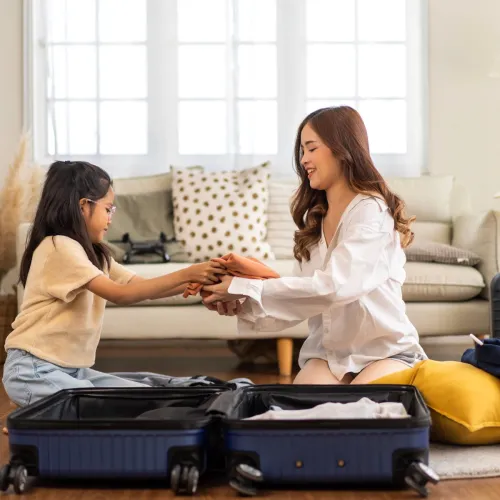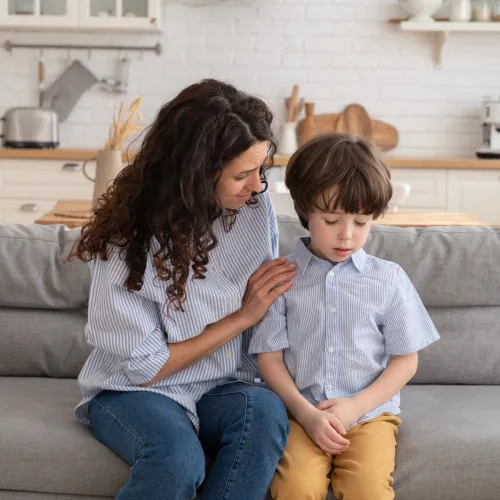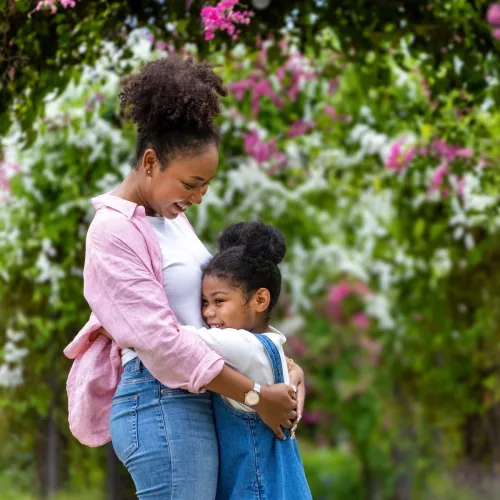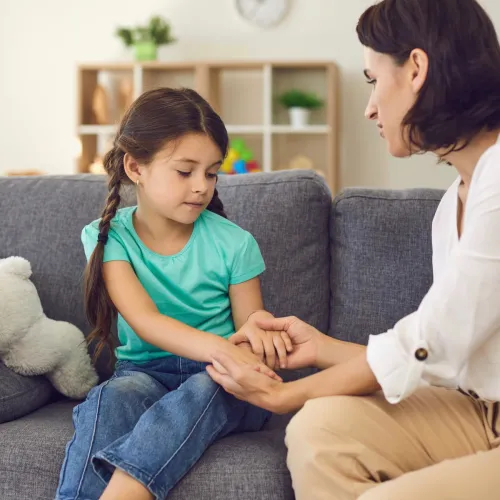7 Ways to Help Your Kids Live Happily in Two Houses

Living in two homes can be hard for a child. Facing the fact that their parents have separated or divorced can be very difficult to cope with, and moving between two houses can create anxiety even for the most easy-going of kids. But with the right strategies and support systems in place, your kids can make this transition while still living happily in both of their homes. Here are seven ways to help your kids live happily in two homes.
1. Living happily in two houses means feeling comfortable in both homes.
Think about each of your kids and what they need and desire in order to feel comfortable. Have the basic necessities available in your house, but also think about what small treats or special items you could get to make them feel even more at home.
2. Give your children their own space in each house.
Depending on the size of the house and number of kids, it could be an entire bedroom for each child, some special drawers in a shared bedroom, or a space in the living room for toys and crafts. Encourage your kids to decorate and use their space in whatever way that makes them happy.
3. Have some duplicate items in both houses.
Keeping some of the same items stocked in both homes prevents kids from having to pack a bag with every parenting time changeover. Those items may include clothing, shoes, toys, toiletries, books, craft supplies, and more. Even so, your kids may have some special items that make them happy to have wherever they are. Let them pack those items to bring them from home to home.
4. Maintain a routine in each house.
Kids thrive on stability, so having a predictable routine of meals, homework, play, and bedtime could help to relieve some of their anxiety regarding moving between their two houses. The routine doesn't have to be the same in each home; simply having one in each home will help to create a sense of normalcy and predictability in each house.
5. Stay positive.
When your kids speak about their other house, do your best to respond positively. Let your child tell you about something fun they did with their other parent without making them feel guilty for having told you. Respect your co-parent's time with your kids and the rules they have set in their home as long as your child is always safe and healthy in their care.
6. Keep transitions times as simple and smooth as possible.
Find a way to keep in touch with your kids when they are at their other house while still respecting your co-parent's time with your kids. This might include scheduling a daily phone call or video chat, or even just checking in every few days. It may even be helpful to keep a color-coded calendar in each of your homes that your children can see exactly when they'll be in each of their homes.
7. Don't ask your kids to spy on your co-parent or act as a messenger between their two homes.
This can create additional stress that your kids don't need. Instead, find an effective way through which you and your co-parent can communicate with each other. Share important information and discuss parenting matters in such a way that doesn't lead you into conflict. If you find that the methods you have used to communicate aren't working, like email or text messaging, consider replacing those methods with something else. Tools that keep your communication clear and concise can help you do this.
Helping your kids to live happily in two homes will take effort on the part of you and your co-parent, but it is worth the effort. While these tips will help you maintain happy kids in two homes, there is certainly more that can be done. As a rule of thumb, keep your kids in the forefront of your mind as you make any decisions related to your family, always working to serve their best interests.



